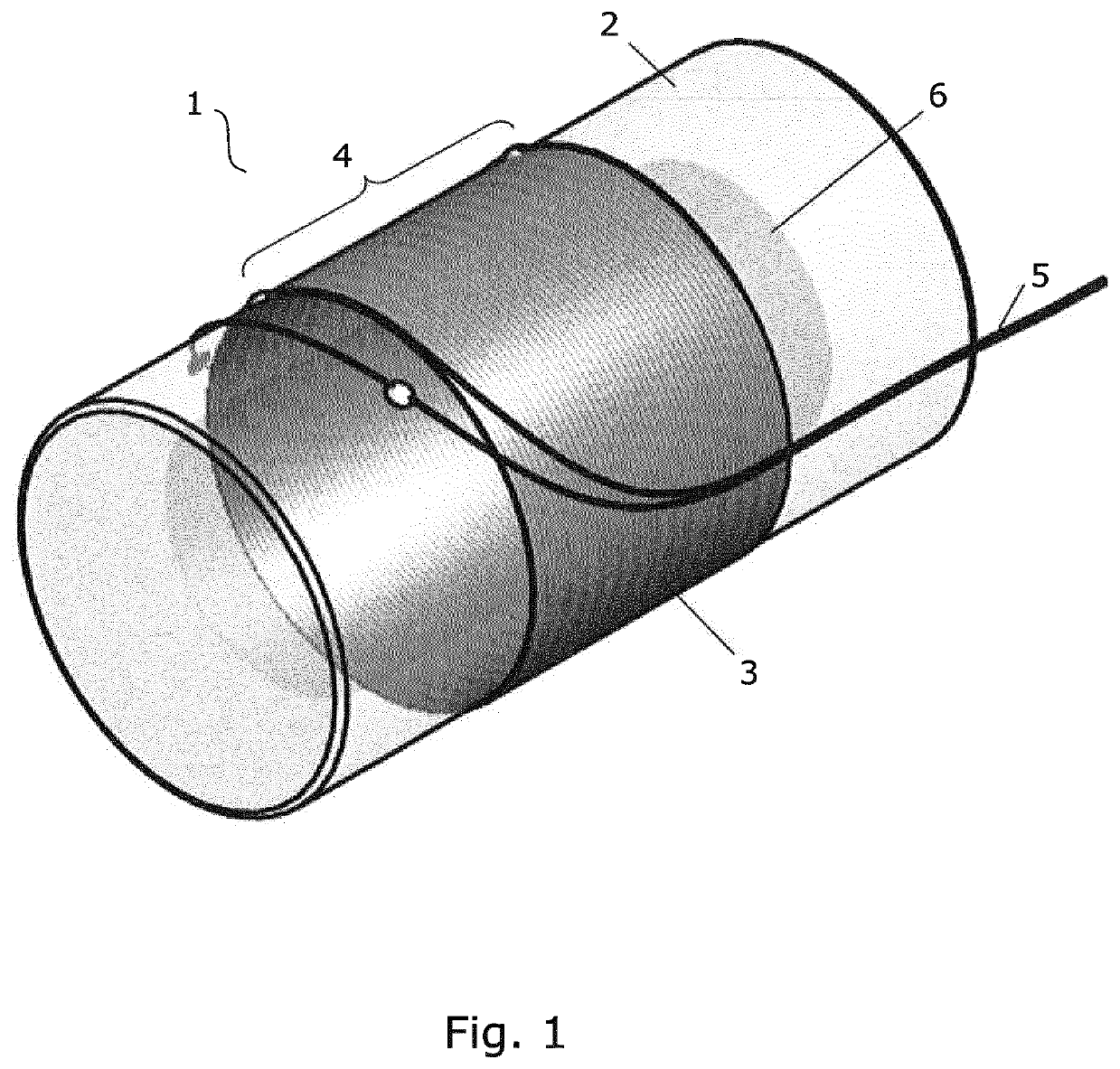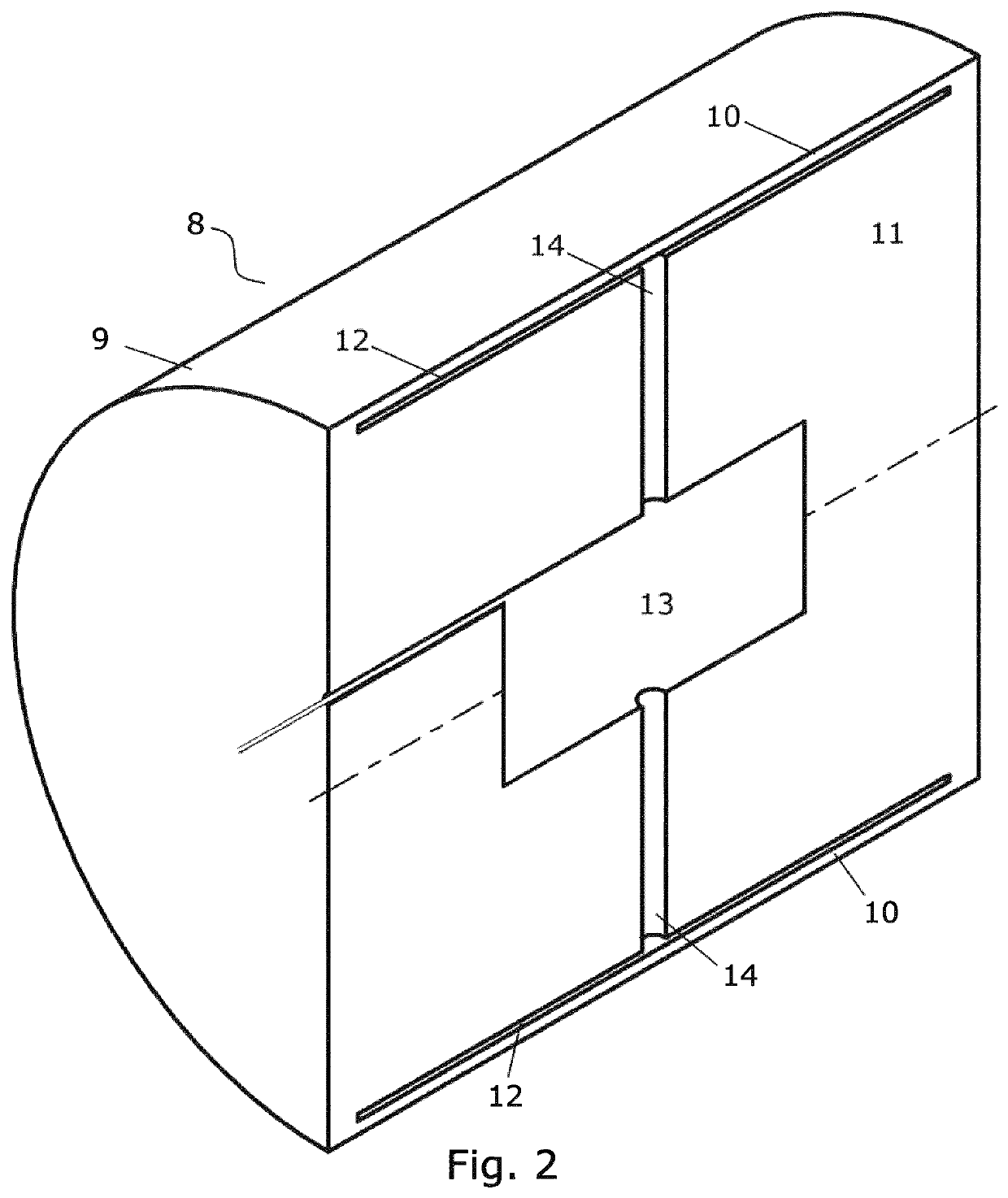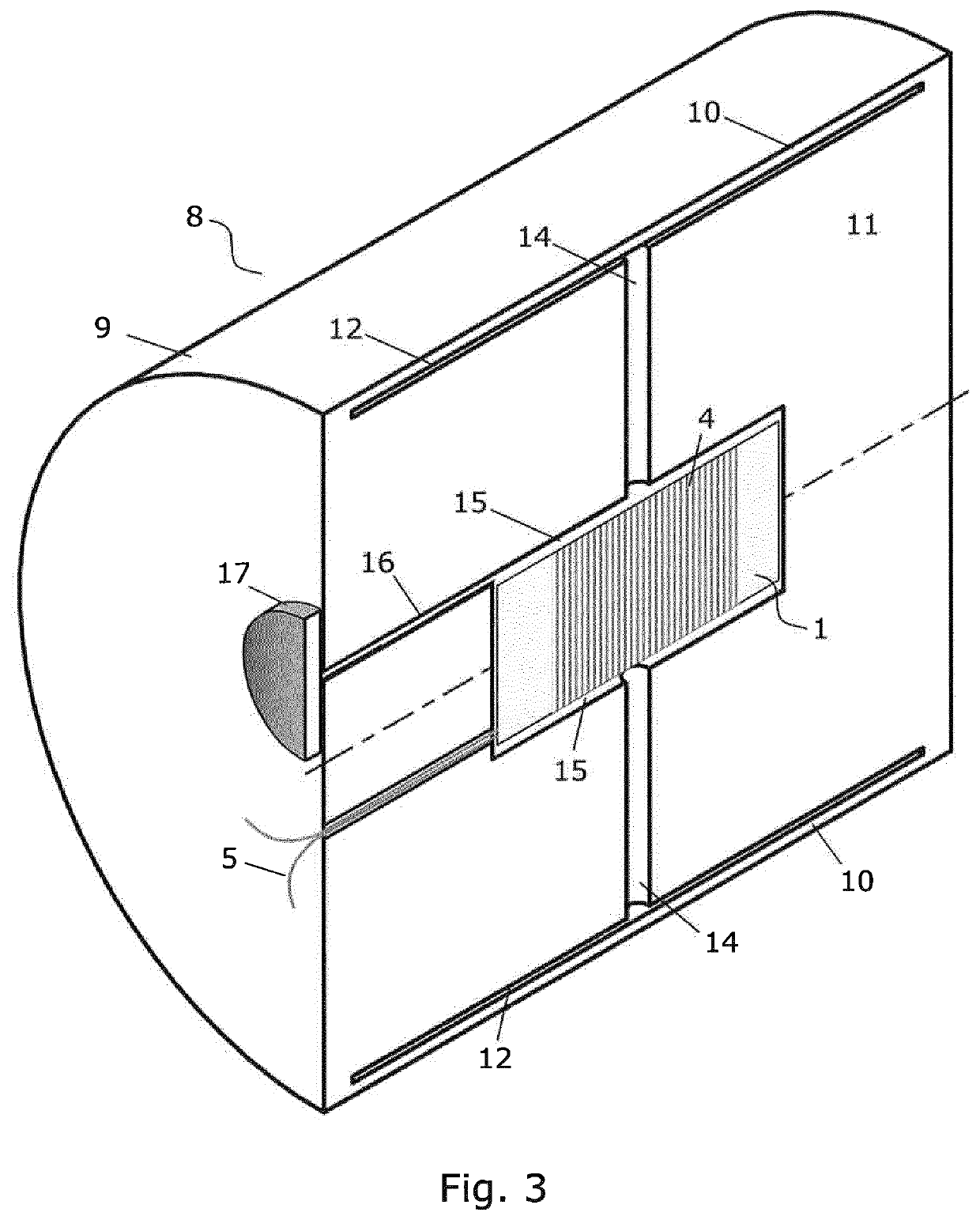Hydrophone housing
a hydrophone and sensing element technology, applied in the field of hydrophone housings, can solve the problems of incomparable measured signals, disadvantages of prior art hydrophones for sensing pressure changes, and inability to detect pressure changes, so as to reduce absolute strain in the element, increase the sensitivity, and reduce the effect of relative strain
- Summary
- Abstract
- Description
- Claims
- Application Information
AI Technical Summary
Benefits of technology
Problems solved by technology
Method used
Image
Examples
Embodiment Construction
[0049]FIG. 2 illustrates an embodiment of a hydrophone housing 8 according to the invention. The housing comprises an outer casing 9 having an exterior shape suitable for being in close contact with sediment when buried therein. The casing is preferably made in metal, such as stainless steel.
[0050]Part of the casing is very thin in order to form a deflectable wall part 10. As previously mentioned, the area (A1) and thickness of the flexible wall part, as well as the material of the casing, are selected to achieve the desired acoustic pressure transfer properties. The interior of the casing is partly filled with a substantially incompressible solid material 11, typically also metal, such as stainless steel. It is important that this material does not absorb pressure energy, as that would devaluate the acoustic pressure transfer to the hydrophone sensing element 1. The solid material is arranged so that it defines at least:[0051]an outer chamber 12 behind the deflectable wall part;[00...
PUM
 Login to View More
Login to View More Abstract
Description
Claims
Application Information
 Login to View More
Login to View More - R&D
- Intellectual Property
- Life Sciences
- Materials
- Tech Scout
- Unparalleled Data Quality
- Higher Quality Content
- 60% Fewer Hallucinations
Browse by: Latest US Patents, China's latest patents, Technical Efficacy Thesaurus, Application Domain, Technology Topic, Popular Technical Reports.
© 2025 PatSnap. All rights reserved.Legal|Privacy policy|Modern Slavery Act Transparency Statement|Sitemap|About US| Contact US: help@patsnap.com



